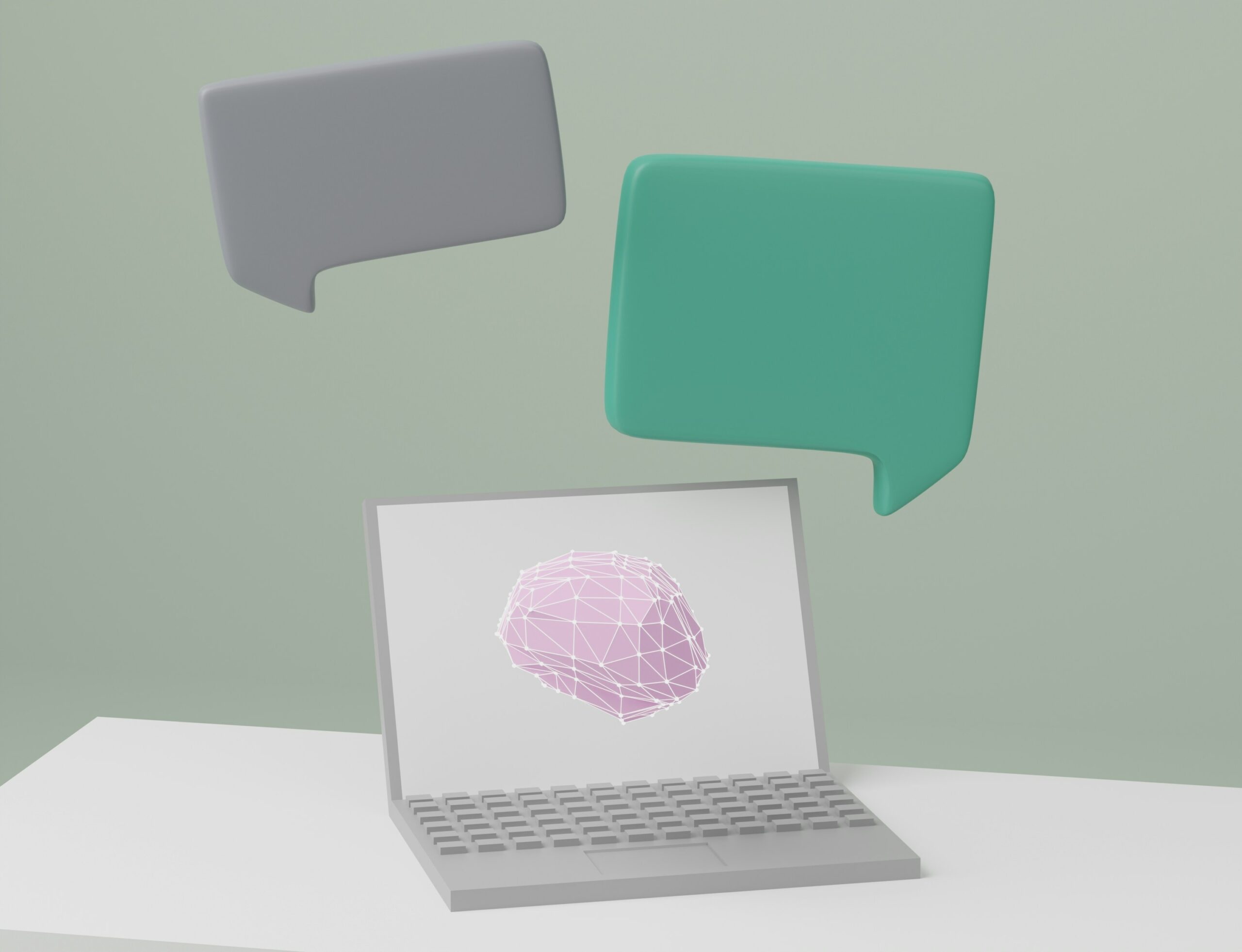
For one of my courses this semester, we had to present an article that we found intriguing and had some connections to our project. This is my presentation script:
My research focuses on artificial intelligence, specifically examining the impact of generative AI on literacy skills. AI’s impact on literacy remains uncertain as it is an emerging technology, there is limited empirical data to measure its effects. To address this gap, I aim to bring together English and Social Studies teachers, particularly those teaching middle and high school, through an unconference. This collaborative setting will allow educators to share their insights, concerns, and experiences.
Imagine walking into a classroom where AI isn’t just a tool but a true learning partner—an assistant that personalizes lessons, helps students think critically, and even adapts to different learning needs.

Photo by Valeria Nikitina For Unsplash+
While exploring articles for my project, I came across this article by Yoshija Walter called Embracing the Future of Artificial Intelligence in the Classroom: The Relevance of AI Literacy, Prompt Engineering, and Critical Thinking in Modern Education. It examines how AI is shifting the educational landscape and why new skills—like prompt engineering and critical thinking skills—are essential for success. After reading the abstract, I thought it was a great article with many connections to my project. I’ll start with an overview of the article, adding some personal connections.
Walter suggests that including AI in education will lead to a paradigm shift, transforming classrooms into more creative, dynamic, interactive, and student-centred learning environments. This article focuses on a case study and literature review, exploring key concerns raised in the research—particularly the need to connect AI literacy and critical thinking skills for more effective learning. It then examines how AI reshapes education, requiring students and educators to develop new competencies that focus on AI thinking not for the user but on how the user can use AI to improve their learning in a critical manner.
Case Study at Swiss University of Applied Science (Kalaidos (Cal-lay-do) University, Zurich):
- Researchers conducted discussions with students and lecturers to explore AI’s role in education and gather insights on its effectiveness and challenges.
- Teacher-student discussions
- Individual discussion with students
- Correspondence from meetings
This led to gaining insight into the current perceptions and attitudes toward AI at the university. Findings showed that while AI was helpful, both students and educators lacked clear guidance on its proper use. Rather than banning AI, they favored structured guidelines, which led to the formation of an AI task force to establish best practices. Although this case study focused on adult learners, many of its insights are highly relevant to secondary education, highlighting similar challenges and the need for clear AI integration strategies in K-12 classrooms.
As there were still areas left untouched from the case study, Walter found a literature review was also needed. This led to a literature review examining AI literacy and the essential skills required for its development. Through this analysis, a strong connection emerged between AI literacy— like prompt engineering—and critical thinking skills, emphasizing their importance in navigating the evolving educational landscape.
What the Research Says:
AI Literacy is still a ‘living concept’ that is in the process of being defined (Walter, 2024). This is because AI constantly evolves, requiring us to adapt our understanding continuously. “The current state of AI literacy in education reflects a burgeoning field, ripe with potential yet facing the challenges of early adoption” (p. 11, Walter, 2024).
Integrating AI into education is crucial, much like the past introduction of calculators and computers. Beyond enhancing learning, AI fosters critical thinking, computational skills, and problem-solving, helping students develop technology fluency and creativity.
I believe that AI integration mirrors the evolution of computer literacy—once confined to standalone courses, now embedded across subjects. AI is following the same trajectory, transitioning from an emerging tool to an essential education component.
While AI presents opportunities, educators face concerns such as AI misuse, privacy risks, lack of structured frameworks, and ensuring students engage critically rather than outsourcing cognitive work.
The last point resonated, as I frequently observe this behaviour in my classroom. It was the first time I encountered literature that distinguished the cognitive processes involved in using AI, highlighting the difference between active engagement and passive reliance on the technology. I’ve applied this concept in my own teaching by providing students access to AI for writing feedback and facilitating interactions with historical figures, encouraging deeper engagement and critical thinking.
The literature goes on to relay that by integrating AI into education, we not only equip students with foundational skills early on but also open the door to advanced learning techniques that will benefit their future careers, creating new job opportunities in the process.
The Three Core Skills for Future-Ready Learners (Walter, 2024):
- AI Literacy – Understanding how AI works, its limitations, and ethical considerations.
- Prompt Engineering – Structuring inputs to get accurate, meaningful AI responses.
- Critical Thinking – Evaluating AI-generated content, ensuring it’s reliable and relevant. ___
“Prompt engineering, at its core, involves the strategic crafting of inputs to elicit desired responses or behaviours from AI systems. In education settings, this translates to designing prompts that not only engage students but also challenge them to think critically and creatively” (Walter, 2024, p. 13).

It’s an art form focusing on language—how a user phrases a prompt. Effective prompt engineering enhances students’ critical thinking, communication, and problem-solving by guiding them to structure clear, precise inputs for meaningful AI-generated responses. The literature outlines various levels and types of prompt engineering, each designed for a specific purpose. As I reviewed it, I recognized my progression in prompt engineering, reflecting on how my approach has evolved through hands-on exploration—both for personal use and in my professional practice.
- Basic Input-Output Prompts (IOPs): Simple, structured requests to retrieve information.
- Narrative Role-Play Prompts (Expert Prompts – EP): Assigning AI a specific role to generate expert-level responses.
- Self-Consistency (SC) Prompting: Refining AI responses to minimize errors and reduce misinformation (“AI hallucinations”).
Project Connections
I found it particularly interesting that after conducting his case study, Walter’s findings closely aligned with existing literature, which highlights a major concern: both educators and students share a common fear—the lack of clear guidance and frameworks for AI integration in education. This reinforces a growing challenge in the field: without structured approaches, training, or institutional policies, there is uncertainty about how AI should be used, leading to hesitation, misuse, or reliance on AI in ways that may hinder learning rather than enhance it.
This finding strongly resonated with my own research focus and classroom experiences. In my school division, no official AI policies or frameworks currently exist, leaving teachers to navigate AI integration independently without clear expectations or best practices. This lack of structure makes it difficult to assess whether students are using AI to enhance their critical thinking or simply relying on it to complete tasks with minimal effort.
I have already observed students outsourcing cognitive work to AI, treating it as a ghostwriter rather than a tool for deeper learning, even with constant reminders that it is against our academic honesty policy. Without proper instruction, students may unknowingly bypass essential literacy development, such as analyzing GenAI’s out texts, structuring arguments, or refining their writing. This aligns with Walter’s case study, which also found that many educators feel unprepared to teach AI literacy and fear that students will use AI in counterproductive ways if clear frameworks are not established.
This is why intentional AI literacy instruction is essential, particularly in areas like prompt engineering. If we teach students how to craft detailed, intentional prompts, we can shift AI from being a tool of convenience to a tool of critical thinking, inquiry, and creativity. Instead of passively accepting AI-generated responses, students should be encouraged to refine their questions, evaluate responses, and challenge the AI’s accuracy—transforming their interactions into meaningful learning experiences.
Walter’s case study and the supporting literature reinforce that AI is here to stay, and its role in education will only expand. However, its impact on literacy skills and student learning remains uncertain without clear guidelines, policies, and educator training. This directly connects to my research, where I aim to bring together English and Social Studies teachers to to discuss similar issues faced in MS and HS. Gathering educators’ insights, I hope to uncover patterns, concerns, and possible solutions that could inform future AI literacy frameworks and instructional strategies.
AI isn’t going anywhere. The question is – how will we use it effectively? Let’s move beyond fear and hesitation and focus on empowering students with new skills.
Citations
Walter, Y. (2024). Embracing the future of Artificial Intelligence in the classroom: The relevance of AI literacy, prompt engineering, and critical thinking in modern education. International Journal of Educational Technology in Higher Education, 21(1), 15. https://doi.org/10.1186/s41239-024-00448-3
Leave a Reply